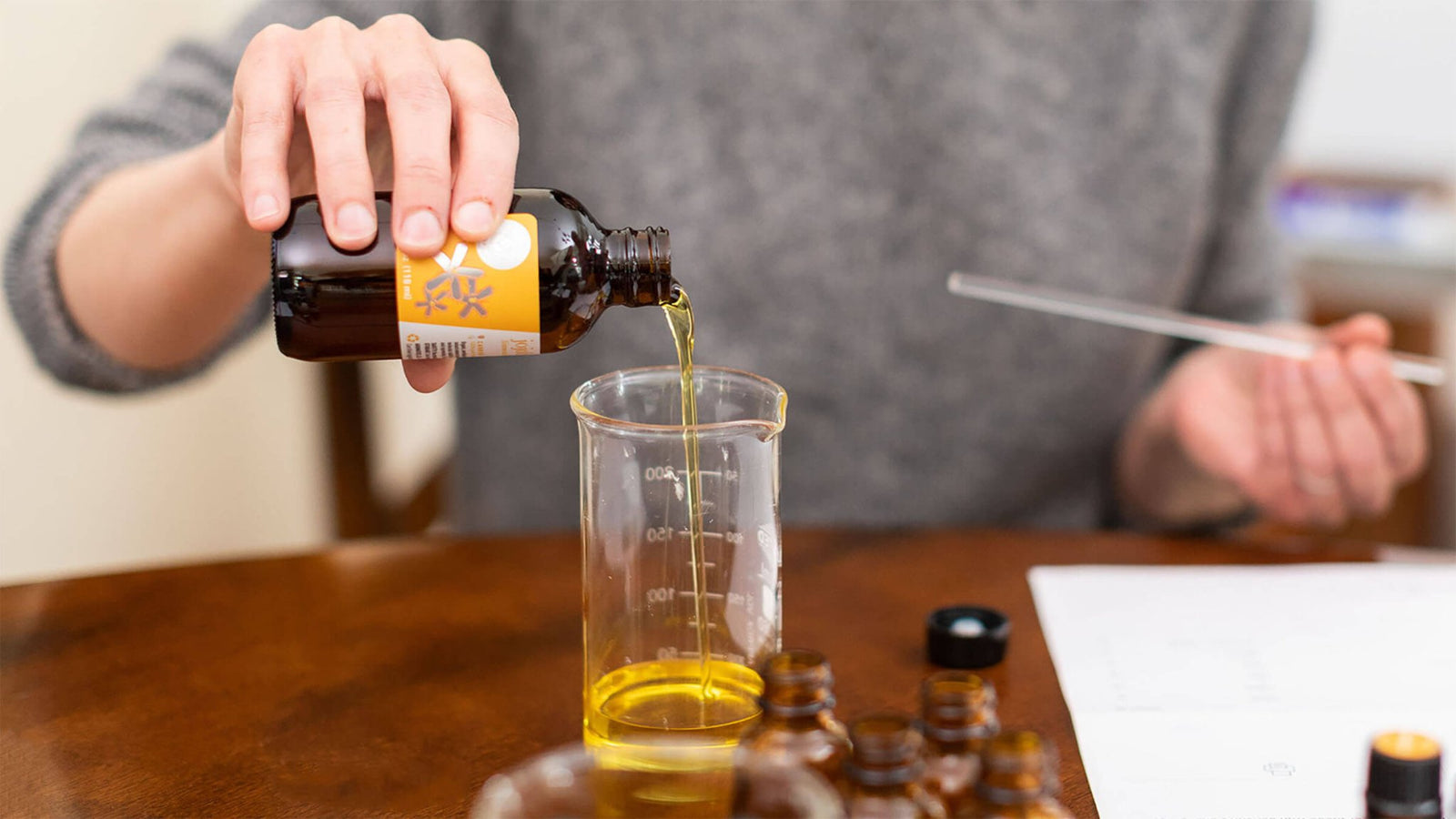Essential oil blending techniques

Essential oil blending techniques
You have so many options for how to make your blends. In this guide, we’re going to focus on three different perspectives.
Blending by aroma will help you make beautifully scented blends! This style can be combined with all of the others, making it universally applicable.
Considering the plant part that an oil comes from allows you to make products that have unique emotional and energetic effects.
And understanding the properties of specific chemical components means you can approach blending from a scientific perspective, making safe, effective therapeutic products for your clients.
On the Aromatics International website, we’ve made it simple for you to find essential oils based on their properties.
On our main essential oils page (see it here!), you can apply search filters to find oils with specific aromatic notes. Or oils distilled from certain plant parts. Or those with specific chemical components (In all, you have 10 ways to filter your search!).
How to use the filter tool:
1. Go to our Essential Oils Collection Page.
2. Above the essential oils, you’ll see a variety of properties listed, including “Aromas”, “Botanical Family”, and “Chemical Components”. These are your filters to find specific oils. You can also click “More Filters” on the left, and an extra line of filter options will appear.

3. Click the property you'd like to filter by. For example, when you click "Notes" a menu appears listing all of the aromatic notes.

4. Click one of the options, such as “Top”. The essential oil collection page will now only display essential oils that have a top note. (You can also select more than one aromatic note. Choosing “Top” and “Middle” will bring up oils that contain both top and middle notes.)

5. When you use the “Chemical Component” filter and select a component, such as linalool, your essential oil options won’t immediately change.

Instead, you’ll notice a sliding bar tool appears. This lets you choose oils that contain from 0–100% of linalool. Move the dot under “0%” forward halfway, and the essential oil options will show you oils that contain at least 50% of linalool.
Move the dot forward farther to see oils that contain OVER 50% linalool.
Not getting enough results? Move the dot backward to 40%, 30%, or less.
Note: The first few times you use the sliding tool, just using the dot under the “0%” can help you get the hang of it. As you become familiar with the tool, you can also adjust the dot under “100%.” That can be helpful if you don’t want a specific component in your blend.
Essential oil blending techniques
Join Our Newsletter
Save 15% on your first order
Aromatherapy sent directly to your inbox. Receive tips, essential oil recipes, promotion alerts, live events and more. We look forward to connecting with you! *Exclusions apply.
